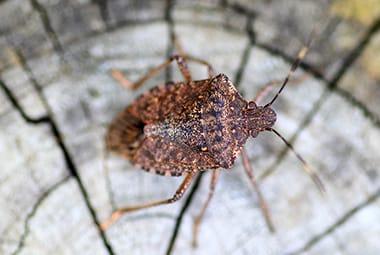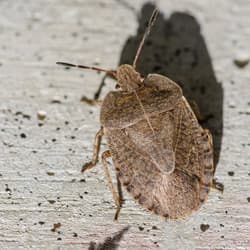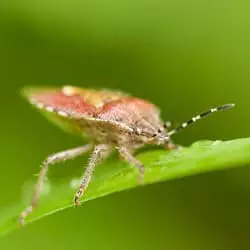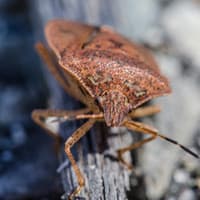Brown marmorated stink bugs are an invasive insect species native to Asia but were introduced to the United States in the state of Pennsylvania in 1998. Since that time, stink bugs have become a widespread problem across our continent, causing many problems for U.S. residents, including those in Knoxville. Brown marmorated stink bugs are brownish-gray in color and often described as “shield-shaped insects.” These invasive insects got their name from the putrid smell they release when crushed or threatened.
Why do stink bugs invade?
Stink bugs are classified as an agricultural pest because of their tendency to destroy crops. Some of the plants stink bugs damage include fruit trees, ornamental plants, and gardens. Stink bugs aren’t threatening or dangerous to people, as they don’t bite or sting. Brown marmorated stink bugs are considered more of a nuisance pest. Stink bugs are a type of overwintering pest, which means they find warm, sheltered areas to become dormant during the colder months. Now that fall has arrived, stink bugs are actively searching for places to overwinter. They often try to invade Knoxville homes to hide in walls, attics, or crawlspaces. In winter, if the weather warms up, stink bugs overwintering in your home may be tricked into thinking spring has arrived and become active inside your home.
Stink Bug Prevention Tips
Stink bug infestations can be prevented with several basic pest prevention tips, as well as a few that are stink bug-specific. Keep stink bugs out of your Knoxville home by doing the following.
- Cut thick brush and foliage away from your exterior walls
- Remove clutter from your lawn
- Reduce moisture on your property by repairing leaky faucets and dumping out items that have collected water
- Replace torn window screens
- Seal all possible entry points, including gaps in your foundation, holes made for utilities, and crevices around your exterior walls
- Wipe your window sills and doorways with scented dryer sheets
- Kill stink bugs found around the outside of your home to deter other stink bugs from invading
It’s important to remember that prevention tips are not 100% effective and you may still end up with an infestation. If you find stink bugs in your Knoxville home, it’s time to contact the professionals at Russell’s Pest Control. We understand how frustrating pest problems can be, which is why we are dedicated to keeping your property pest-free all year long. For assistance with your pest problem, give Russell’s Pest Control a call today.



